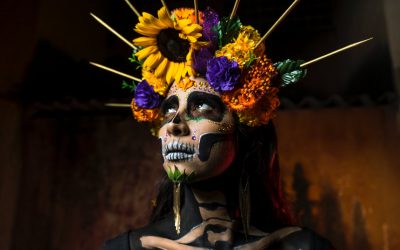Day of the dead is a popular Mexican holiday celebrated to commemorate the dead.
Mexico’s Day of the Dead, or Dia de los Muertos, is a festive occasion that honours and celebrates the lives of deceased loved ones. Depending on the locality, the holiday spans several days, from 31 October to 2 November and is marked by colourful altars, feasts, festivities and parades. Families clean and decorate the graves of their deceased relatives and often hold all-night vigils at the gravesides. The Day of the Dead is a joyful and spiritual time. It is a time to remember and honour those who have passed on.
The origins of the Day of the Dead can be traced back to the pre-Hispanic cultures of Mexico, particularly the Aztecs, who considered death a natural phase in life’s cycle. Over 3,000 years ago, the Aztecs worshipped many gods and goddesses, including Mictēcacihuātl, a goddess of death and ruler of the Aztec underworld.
The Aztecs believed that the dead returned to earth every year to be with their families and held a festival to honour and welcome them. The Day of the Dead in the Aztec calendar occurred in the ninth month, and month-long celebrations were held. Aztec people left offerings on altars that would help their dead relatives on their journey to the afterlife.
Sugar skull offerings

The graves of the dead were decorated with skulls shaped from clay and white sugar. The skulls were decorated with shells, feathers, beads and icing. The skulls would be placed on an altar by the grave, along with the deceased’s favourite things. This would help guide them back to earth for the two-day celebration with their families.
As with most celebrations, the Day of the Dead has evolved over the generations. Sugar skulls are now found in paintings, clothing, ornaments, and makeup styles. You will often see people wearing sugar skull makeup during the celebrations.
Day of the Dead celebrations today
The Spanish Conquistadors ended the Aztec empire in the 1500s, bringing Christianity with them. After the Spanish conquest, the holiday evolved and incorporated elements of both Native American and European traditions.
During the 20th century, the month-long festivities were reduced to three days: Halloween on 31 October, Day of the Innocents on 1 November, and Day of the Dead on 2 November.
Today, the Day of the Dead is celebrated throughout Mexico. It has also gained popularity in other parts of the world.






Leave a Reply